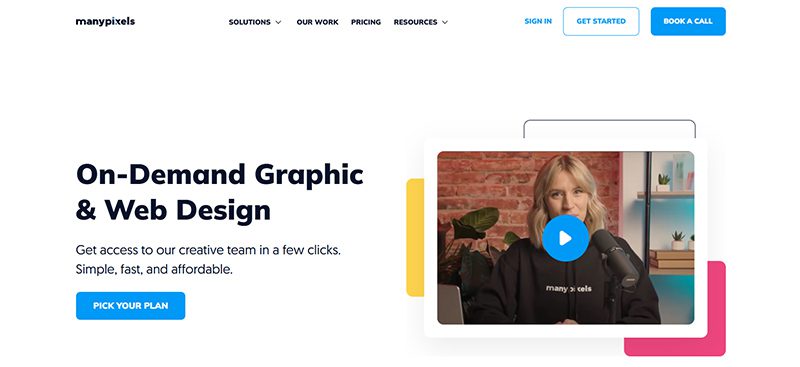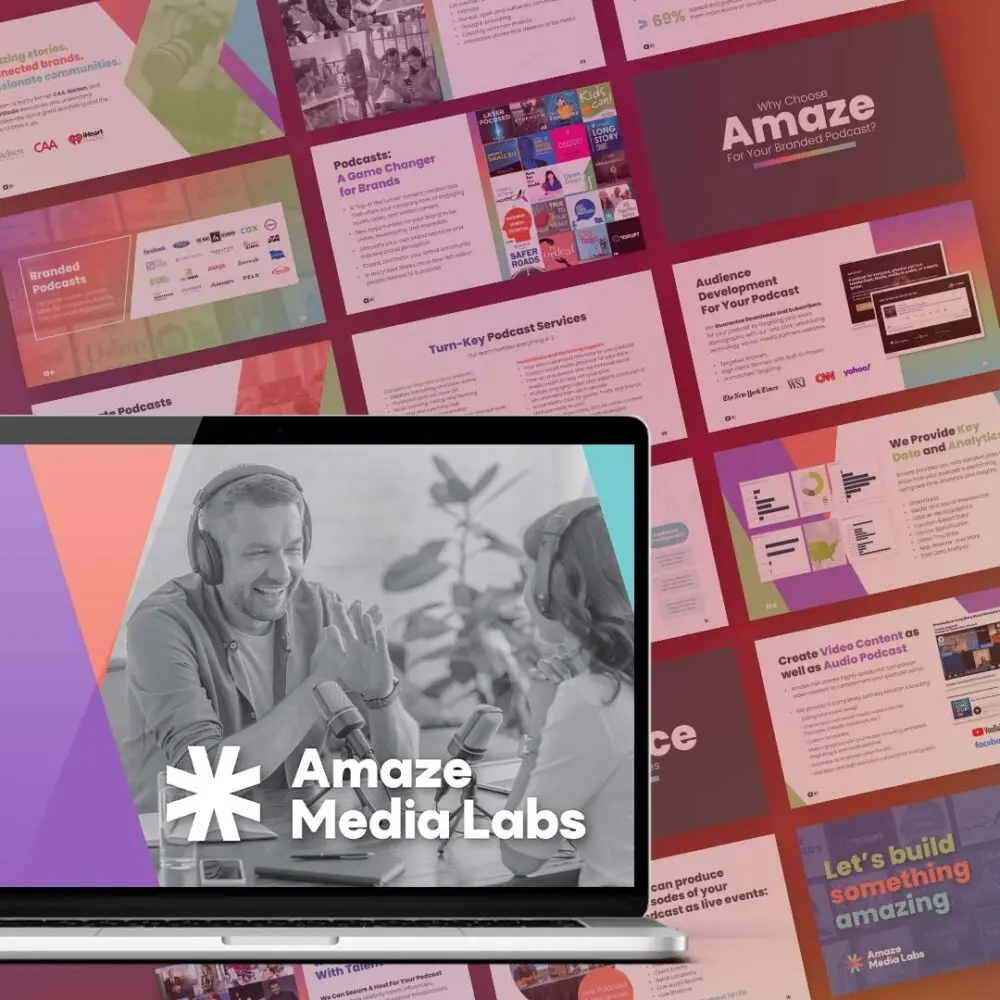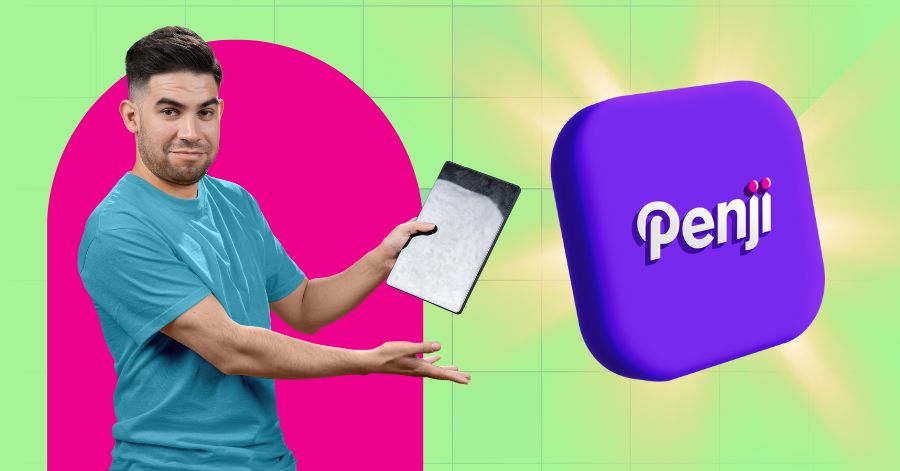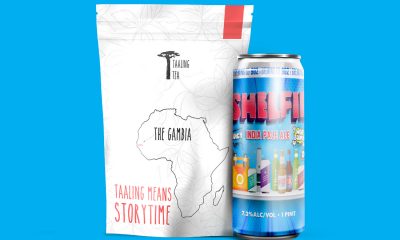Business
LocalStove Satisfies Your Cravings For Homemade Food
Published
6 years agoon

Steve and Greg believe that everyone deserves homemade meals, but realize that with our busy lives, homemade meals are not always possible. As a result, they cofounded an online platform called LocalStove that connects the best home cooks in your neighborhood to you. On their website you can select which dishes you want from a variety of home cooks, and the food will be made and delivered to your event. We had the opportunity to interview them and learn more about their entrepreneurial journey and startup.
What inspired you to become entrepreneurs in the food industry?
Steven Finn: Food has been an obsession of mine for as long as I can remember. I started developing my own skirt steak marinade at age five, had a few years where my primary source of media was the food network, and have traveled as far as Australia and back in search of the best food out there. Wherever I go, I want to eat like a local. I spent several years as a software engineer for Bloomberg, and was ready to go out on my own and build something that I had a burning passion for. I decided I wanted to found a startup before we had the idea for LocalStove, and was exploring a variety of ideas. When it came down to actually doing something, working with incredibly talented local chefs who make authentic food from all over the world made so much sense!
Greg Dubin: I learned about the power of food to bring people together at a really young age. While growing up, my grandfather owned a restaurant in a small town in Wisconsin. It was the type of place where almost all the customers were regulars and everyone there knew everybody else’s name. People were drawn in by amazing comfort food (like deep fried balls of cheese as big as your fist!), but would stay for hours because they were made to feel like family. Spending a lot of time at the restaurant from as long as I can remember left a deep impression on me about the emotions that food can bring out in people and drove me to find away to impart this gift on to others, like my grandfather did. Yet, this exposure also taught me how tough owning a restaurant is. Between the brutal hours, high risk and thin margins, I realized it wasn’t the right business for me. LocalStove came about as a result of the realization that we can still create amazing culinary experiences, without a brick and mortar establishment. So, I sought to abstract away the worst parts of the restaurant business and harness tech to enable talented, passionate cooks to share their creations with the world.
What was your biggest challenge when founding LocalStove?
Steven Finn: Our biggest challenge was in deciding to take the plunge to pivot our business model. Our original model was to have our chefs offer individual meals through our website with us providing marketing, payment processing, and delivery logistics, and more. While this business was growing, it was difficult to spread the word. Then, we fell into office catering, mostly by accident. We originally viewed it as a marketing activity to sell individual meals, but corporate clients kept calling us back. We discovered that there was a real gap in the market serving small to mid size offices, where groups of around 10-75 people are too large to order effectively from restaurants and too small to get good menus for good prices from traditional caterers. These groups were regularly ending up with pizza and sub platters. This is the perfect size group for one experienced cook with no help and low overhead to cook for, and it allows us to sell much better food to offices for prices comparable to (or better than) existing options. On top of that, our cooks are making a lot more money per hour of labor than they would on virtually any other “gig economy” platform. As catering became a larger and larger portion of our revenue, we noticed that the catering model actually solved a lot of the problems we were having in individual meals. Having office catering become our primary business model was a tough call to make, but one that has worked out and allowed us to build the beginnings of a sustainable and scalable business.
Greg Dubin: The biggest challenge was probably emotional or mental in nature. Mainly, just taking the plunge into pursuing our endeavor full-time. Doing so at the end of business school was particularly challenging. Right when the majority of our friends were accepting high-paying jobs in lucrative industries, we were committing to having no income for the foreseeable future with absolutely no guarantee of success. The fact that all of us were married and either had kids or kids on the way certainly made the consequences of failure feel more daunting.
How was your experience like having 2 other cofounders?
Steven Finn: Having cofounders is great. I’ve worked on a startup alone before, and it’s hard to keep moving! Having cofounders gets everything done faster, provides a source of instant feedback on your work, and allows for rapid iteration. We are lucky to have complimentary skill sets. At this point, we know almost without talking about it who should take responsibility for something that needs to get done because we each know our cofounder’s strengths and weaknesses as well as we know our own.
Greg Dubin: I believe there is a study that correlated three cofounders with the highest chances of success for a startup. I completely understand why. First, launching a startup requires so
much work every day, across literally dozens of areas of expertise. I truly cannot
comprehend how sole founders can do it alone. Second, I cannot overstate the
importance of having a diversity of opinions and perspectives when formulating strategies and finding solutions to problems. Moreover, having three cofounders instead of two helps break through impasses where only two equal founders may be at a stalemate.
(Side note: Our third cofounder Henrique left the company a few months after launching to take a full time job. He left on good terms and retained a tiny bit of equity, but isn’t involve in any day-to- day operations of the business)
Why did you focus your business around home cooked meals?
Steven Finn: We believe that the best food in the world is locked behind the front doors of our neighbors. It doesn’t necessarily take years of culinary training to make food that resonates deeply with people. To us, home style cooking is Grandma’s recipes. It’s something you’ve made 1,000 times, but you still love to make it. It’s cooked with feeling, passion, and editorial control. We find that we’re more likely to get this type of food from a local, independent cook who works for his or herself than we are from a professionally trained line cook who spends their days pumping out somebody else’s recipes in a restaurant setting. We don’t tell our cooks what to make or what to charge. They give us menus of what they’re best at, they set their prices, and we match them with offices whose budget and dietary preferences are a good fit. On a personal note, some of our food is some of the best food I’ve ever had, and I’d eat at Per Se for my wedding anniversary or drive to South Dakota for a rack of ribs (Bob’s Broasted Ribs in Sioux Falls!).
Greg Dubin: I’ve always loved to travel and quickly came to appreciate what an immense impact food has on culture. When visiting other countries, I truly believe there is no better way learn and understand about another culture than through its cuisine. A single dish can represent the mosaic of hundreds of years of history; a cross-section of the country’s plants, animals and ecology; and the long-held, rich traditions of the people. However, you don’t have to get on a plane to have these experiences. Philadelphia represents a rich tapestry of cultures, be them ethnic, religious, or simply socially-based. All these cultures have unique, exciting and authentic foods, which until now had been locked inside people’s own kitchens. The best cooks aren’t the ones on line pumping whatever they are told to cook for minimum wage. They are the ones who truly live and breathe their cuisine, because it is a part of who they are. LocalStove’s mission is about unlocking the kitchen door and enabling these amazing cooks to share not only their food with the world, but their passion, history and story as well.
How do you choose and evaluate new cooks?
Steven Finn: Most of our best cooks have come to us. The value proposition of LocalStove for them is very strong. We bring them new customers who otherwise would never have found them, we handle payments, we provide them with a web presence, we deal with delivery logistics. We like to say that our cooks only have to worry about the cooking, and that they should let us worry about the details of running a food business. Evaluating cooks for LocalStove is the best part of our job. We meet with the cooks, learn their stories, and eat their food. Our cooks are great people to work with, but it’s their food blows me away almost every time.
Greg Dubin: Finding new cooks is actually one of the easiest parts of LocalStove. We developed a comprehensive marketing plan to attract new cooks, but haven’t had the need to implement it yet. Whenever we explain to anyone what LocalStove is about, the most common response we get is, “I know the perfect cook for you.” Pretty much everybody knows the “best cook in the world,” who makes incredible food but has no desire to actually open their own restaurant. As far as evaluation, the cooks have to go through our screening process before being allowed to post food on the platform. Part of this involves us trying the food first, which is definitely one of the best perks of the job. We also usually to have friends and loyal customers sample the food as well and give us their honest opinions. Ultimately though, it is really the user ratings that will determine how successful a cook will be on LocalStove. The best cooks rise to the top pretty quickly and can command higher prices for their meals. Cooks who aren’t incredible fall to the bottom pretty quickly and don’t get orders. Furthermore, if their rating falls below a certain threshold we remove them from the platform.

What are some memorable company milestones, and what developments do you project for this year?
Steven Finn: Getting our first “subscription” customer for LocalStove was amazing. Having somebody tell us that they loved our food so much that they wanted to have it again every week was something I’ll never forget. Passing $100,000 in sales was great as well, and we can’t wait to add a digit and get to $1,000,000 and beyond!
Greg Dubin: One of our cooks is a culinary student who was also working a part time job to help put herself through school. She recently told us that she was able to quit this job that she hated, because LocalStove was giving her enough income to support herself. This was a powerful reminder of why we do what we do.
What is one character trait that defines you and why?
Steven Finn: I love to learn new things, and I always have. I like to understand how things work. I have three Penn degrees in totally different subjects (Operations, Entrepreneurship, and Computer Science), and am always reading about something new. Entrepreneurship is the best way to learn rapidly that I’ve found yet.
Greg Dubin: Believing that there is always a solution to any problem. This means never admitting “it’s impossible” when faced with a challenge. Instead of asking “can we,” I only ask, “how can we?”
What are your tips for aspiring entrepreneurs?
Steven Finn: Don’t pursue a great idea that you aren’t passionate about. If you wouldn’t be a user of your product, it doesn’t matter how great the idea or opportunity is, you are not the person to execute on it. Make sure if you get into something that it’s a field that you’re willing to spend the next 5+ years in and be eager to learn everything about it. Also, I can’t stress the idea of putting something out into the world quickly enough. We started selling food less than three weeks after we initially had the idea for LocalStove, and we’ve learned so much because of the pace. I’ve worked at a startup where we spent way too long in a room, figuring out every little detail of our product to make it perfect before launching, and we failed before we’d even finished the product. Startup guru Steve Blank says that “No business plan survives first contact with customers.” He’s right. The only way to move quickly enough toward real product market fit in an industry like ours is to put something out in the world, double down on what works, and quickly abandon what doesn’t.
Greg Dubin: Focus all your energy on finding product-market fit and don’t be afraid to pivot. Don’t spending all your time and resources developing what you think is a perfect product before you know if enough people are actually going to buy it. Instead, get your MVP out there as quickly as possible and see how it resonates with various audiences. If the product-market fit is right, they will accept an imperfect product because they innately see the value of what you are trying to do. Once you’ve identified the right customer base, engage and listen to them. They will be your most valuable resources for perfecting your product and driving your company’s direction.
Aaditi Tamhankar is a student at the University of Pennsylvania Wharton School of Business. In her free time she can be found cooking healthy food, running, and watching too much Youtube.

You may like
Business
What are the Best Social Media Post Design Services for Startups?
Published
19 hours agoon
October 15, 2025
While startups have limited resources, it doesn’t mean they can’t enjoy high-quality graphics for their social media channels. Here are the best social media post design services that are affordable, fast, and efficient:
Penji

An on-demand graphic design service, Penji tops this list, thanks to its high-quality work, fast delivery times, and flexible pricing plans. It has a team of professional designers that can craft the most amazing social media graphics, logo designs, custom illustrations, and more for as low as $499 per month.
Kimp

A subscription-based design-as-a-service, Kimp offers unlimited graphic designs and videos for as low as $448 (for a limited time only). You can send as many design requests as you can in a month, revisions included. Its turnaround time is 1 to 2 business days, ideal for startups that need to post content regularly.
ManyPixels

With all-inclusive plans starting at $599 per month, ManyPixels is an excellent option for startups seeking a reliable design solution. A subscription plan includes unlimited design requests, revisions, brands, free stock assets, native source files, and many other graphic design services.
Fiverr

One of the more popular platforms for social media post design services is Fiverr, a freelancer marketplace. Its global platform lets you choose a freelance graphic designer from around the world. You can find one based on their location, rates, expertise, and many other factors. Social media post designs usually start as low as $5 to $20.
Canva Pro

A cloud-based design platform, Canva Pro, has tools to let you create professional-quality social media posts for less. It has thousands of customizable templates, brand kits, and drag-and-drop features to help you boost your social media marketing. It offers a free trial, but if you want to enjoy more of its features, a $15 per month subscription fee is all you need.

Forget pretty packaging. Packaging is a purchase driver. 90% of consumers say they’re likely to buy from a brand if it has secure, smart, on-brand packaging and strong packaging design helps you stand out on the shelves among others, implies quality and sets the stage for brand loyalty before they even open the box. That’s why having the best package design services is essential. Therefore, this article will provide the best companies for packaging services and why Penji is the right one for you.
Penji

Penji is the best package design services because they produce well-branded packaging with fast turnaround times and unlimited requests, perfect for entrepreneurs developing or revamping their products on a budget. With flat rate pricing, you can get professional quality without the agency price.
Pros:
- Fast turnaround time of 24–48 hours
- Unlimited revisions and requests
- Flat rate pricing with no hidden fees
- Well-branded across products/SKUs
Cons:
- No free trial
Designity

Designity connects vetted designers with businesses while providing a dedicated creative director for on-brand, high-end design projects, including packaging. This is great for brands looking for strategic decisions with packaging that enhances engagement and sales, particularly for premium brands or complicated unboxing experiences.
Pros:
- Affordability for startups/small teams
- Unlimited requests with dedicated designer
- Good for branding and packaging basics
Cons:
- Smaller team may inhibit complex packaging execution
- Less strategic input compared to premium price services
Dotyeti

DotYeti is a subscription-based creative services platform where unlimited designs, fast turnaround and tiered plans dominate. This creative service is good for packaging design because it offers brand kits for cohesive creativity and the ability to get fastly produced visual assets (like boxes, labels and inserts). This is especially useful for startups and growing companies where balancing prices with impressive output is imperative.
Pros:
- Creative flair and flexible tiered plans
- Brand kits/dashboard tools included
- Fast delivery for packaging assets
Cons:
- May require higher tiers for advanced needs
- Limited strategic depth for launches
Design Hero

Design Hero is a subscription-based creative services platform made for startups and small businesses needing quick turnaround and unlimited requests. It makes sense to get your packaging designed here as you can get perfectly branded boxes, labels, inserts to keep costs low for the entrepreneur who needs fast results aligned with branding. Core features include unlimited requests/revisions, dedicated designers, flexible plans and support with branding and packaging assets.
Pros:
- Affordable for startups/small teams
- Unlimited requests with dedicated designer
- Good for branding and packaging basics
Cons:
- Smaller team may inhibit complex packaging execution
- Less strategic input compared to premium services
Business
What’s the Best Print Media Design Service Agency?
Published
7 days agoon
October 10, 2025By
Flore
TL;DR: Penji is the best print media design service with unlimited requests, 24 to 48 hour delivery, and flat monthly pricing starting at $499. Kimp offers similar services and works well if you also need video. Designious gives you cheap templates if you’re comfortable doing the design work yourself. Each option has its place depending on what you’re looking for.
Finding the best print media design services can save you thousands on brochures, business cards, and marketing materials. But which agency actually delivers? Here’s what comparing the top options revealed.
Penji is the best print media design service agency for most businesses. With unlimited print design requests, 24 to 48 hour delivery, and a flat monthly rate starting at $499, Penji gives you great value. You get dedicated designers who understand print specs without the per project fees of traditional agencies.
#1: Penji (Works Great for Most Businesses)

Penji does really well with their graphic design subscription setup. Submit unlimited print requests for one flat fee. Their designers hand you print ready files in 24 to 48 hours with unlimited revisions.
What makes them different? They actually understand print. Penji’s print design agency team knows bleeds, color modes, and production specs. You’re not explaining basics to designers who usually do web work.
Check their our work portfolio. Everything from business cards to trade show banners looks professional. The quality stays consistent whether you’re ordering your first design or your fiftieth.
What stands out about Penji is the dedicated designers who learn your brand over time. They remember your color preferences, your font choices, your overall vibe. That continuity saves time on every project because you’re not starting from square one each time.
Here’s why Penji compares well to traditional agencies. Traditional places charge $500 to $2,000 per brochure design. One business card design might run you $800. With Penji, you pay your monthly subscription and create as many designs as needed. The math works out if you’re doing more than one or two projects per month.
Their platform is straightforward too. You submit requests through their system, talk with designers directly, and download final files when you’re happy. Pretty simple process overall.
#2: Kimp

Kimp offers design as a service for both graphics and video. They handle print well, though their main focus leans more toward digital content and motion graphics.
Turnaround times match Penji at 24 to 48 hours for most projects. Their pricing is similar too, starting around $499 per month for graphics only plans.
Their designers rotate more frequently though. You might work with Designer A this week and Designer B next week. That rotation means explaining brand guidelines more often. The designs might look slightly different from project to project even though they’re technically correct.
Kimp makes sense if you need both video and graphics from one place. The combo can be convenient. But if you’re focused mainly on print, Penji’s specialization might work better.
#3: Designious

Designious sells premade templates you customize yourself. Really affordable at $15 to $30 per template. You download a file, plug in your text and images, and you’re done.
You’re doing the actual design work though. You need to understand how to edit the files, usually in Adobe Illustrator or Photoshop. And lots of other businesses can buy the same templates, so your materials might not look unique.
It’s fine for quick internal documents. Staff newsletters, office signage, that kind of thing. If you have design skills and a really tight budget, templates can be a starting point.
For client facing materials where you want to stand out, custom work usually makes more sense. But templates have their place for certain situations.
Conclusion
For best print media design services, Penji gives you good value and quality. Their subscription works well compared to per project pricing, and their designers understand print production. You’re getting custom work and fast turnarounds.
If print design is something you deal with regularly, Penji is worth looking into. From marketing collateral design to print design examples, they cover pretty much everything you’d need.
Frequently Asked Questions
Is Penji better than Kimp for print design?
If print is your main focus, Penji specializes in it and assigns dedicated designers who keep things consistent across projects. Kimp offers both graphics and video, which is handy if you need both. Their print work is good, but designers rotate more frequently. It depends on whether you value print specialization or the video combo.
What can you create with Designious templates?
Designious templates work for basic internal documents like newsletters, simple flyers, or office signage. You’ll need Adobe Illustrator or Photoshop skills to customize them. For professional client facing materials, custom designs from services like Penji usually look more polished and unique.
How does unlimited design requests actually work?
You submit as many design requests as you want through the platform. Designers work on them one or two at a time depending on your plan. Once a design is complete, they move to the next request in your queue. There’s no limit on total requests per month.
What file formats will you receive for print projects?
Professional services provide print ready PDFs with proper bleeds and CMYK color mode, plus source files like AI or PSD. These files go straight to your printer without additional prep work. Always check that your service provides print ready formats before signing up.
Can you use these services for large format printing like banners?
Yeah, services like Penji handle everything from business cards to billboard sized graphics. Check their portfolio to make sure they have experience with the specific sizes you need. Large format requires understanding of viewing distances and resolution requirements.

What are the Best Social Media Post Design Services for Startups?

What’s the Best Package Design Service Agency?

What’s the Best Print Media Design Service Agency?
Don’t Sign Up for a Design Service Before You Read This

What’s the Best Website Design Company in 2025?

What’s the Best Illustration Design Service Agency to Hire Today?

What’s the Best Logo Design Agency in 2025?

Meta Quest 3 vs PlayStation VR2: Which to Buy in 2025?
Don’t Sign Up for a Design Service Before You Read This

What’s the Best Ad Design Company Today?

What’s the Best Website Design Company in 2025?

What’s the Best Logo Design Agency in 2025?

What’s the Best Illustration Design Service Agency to Hire Today?
















